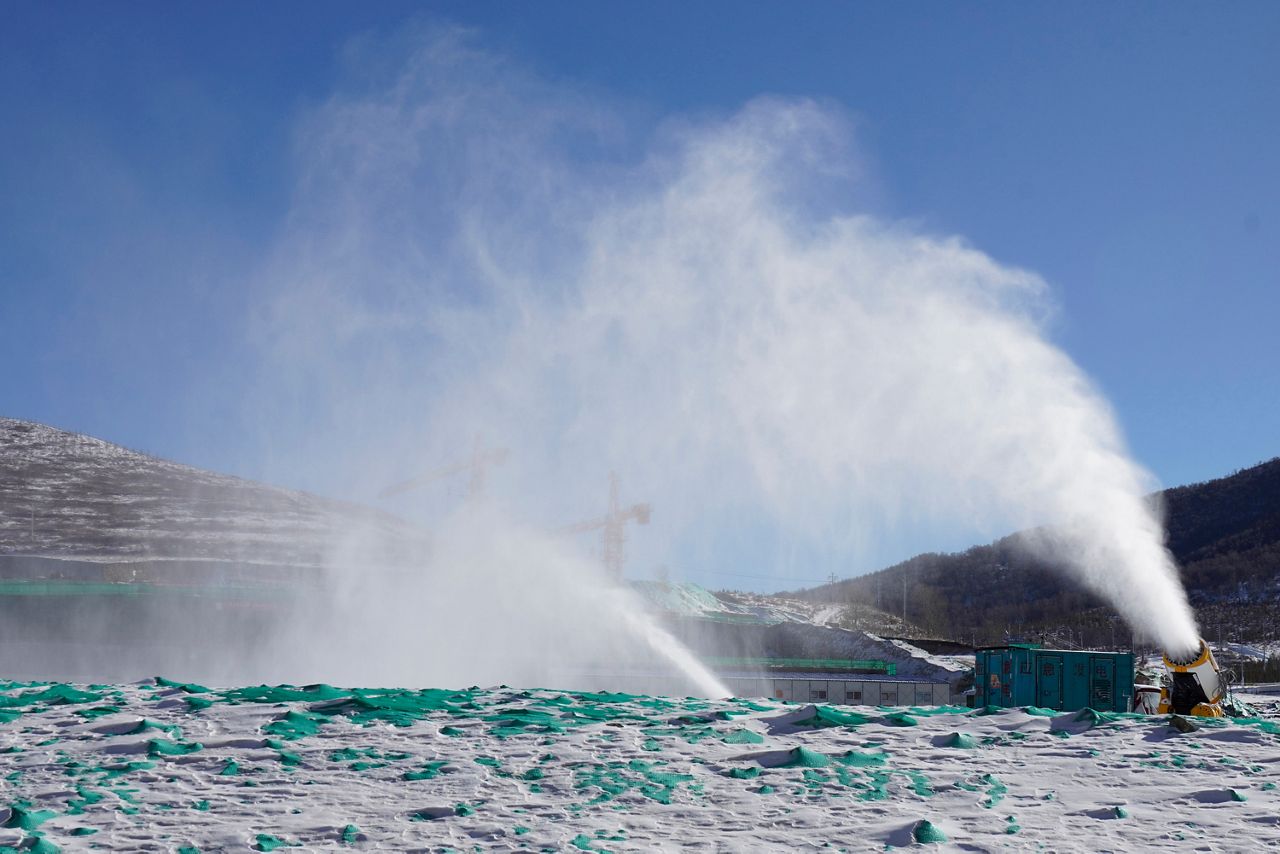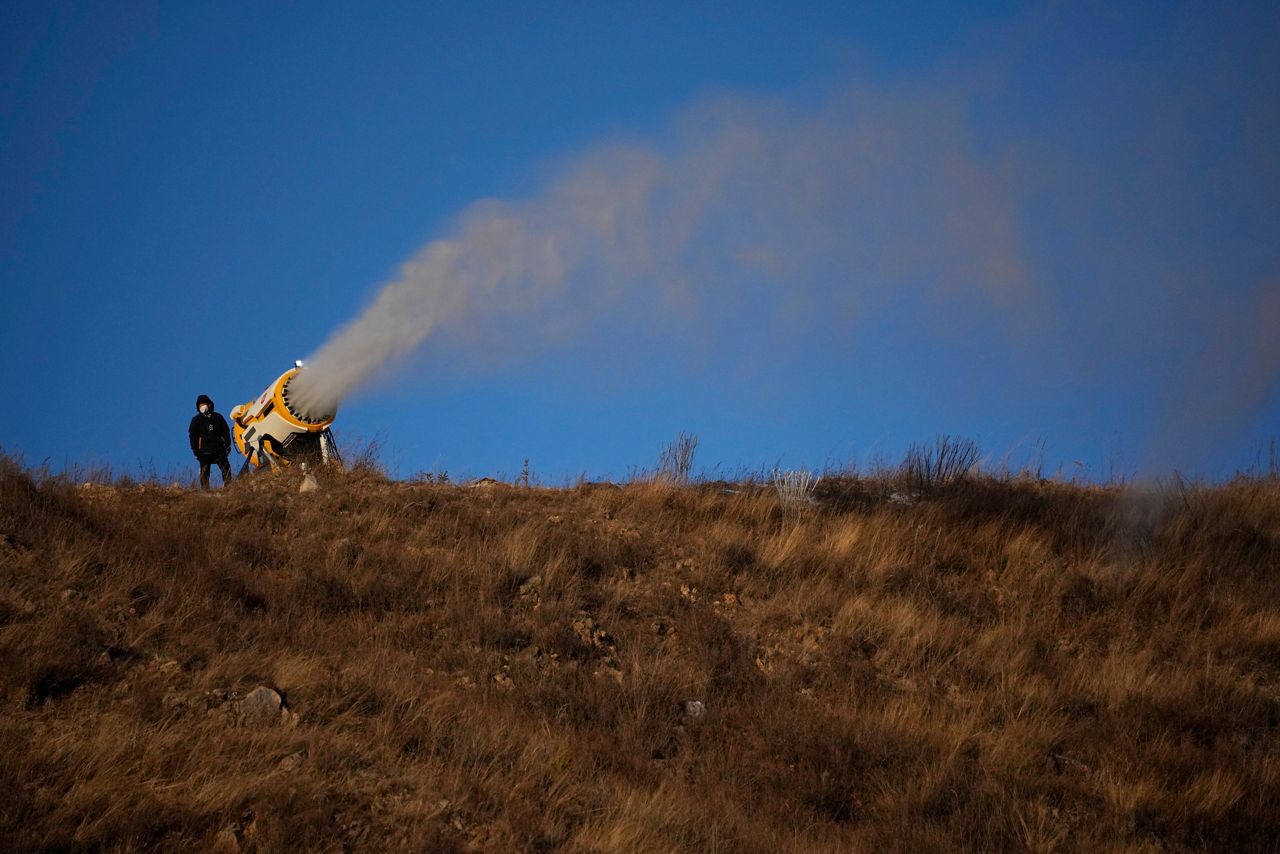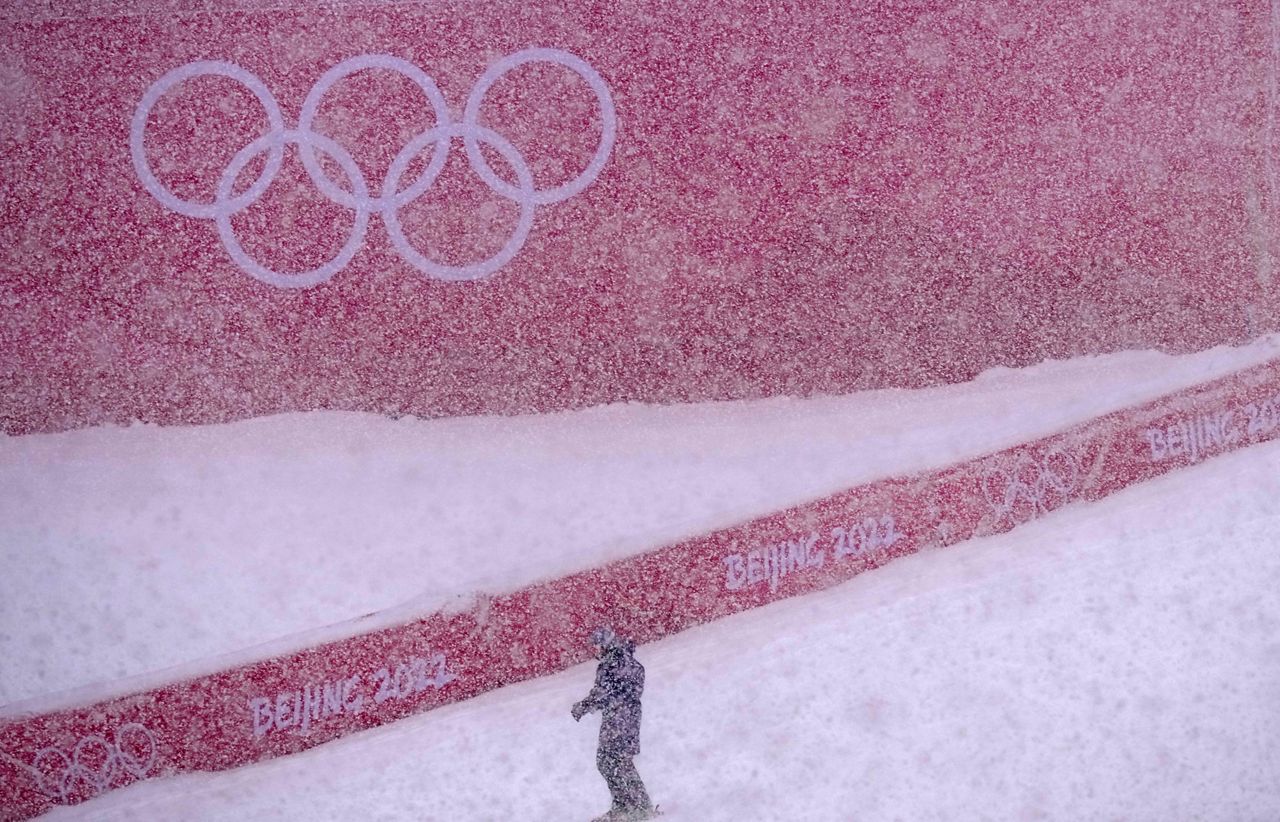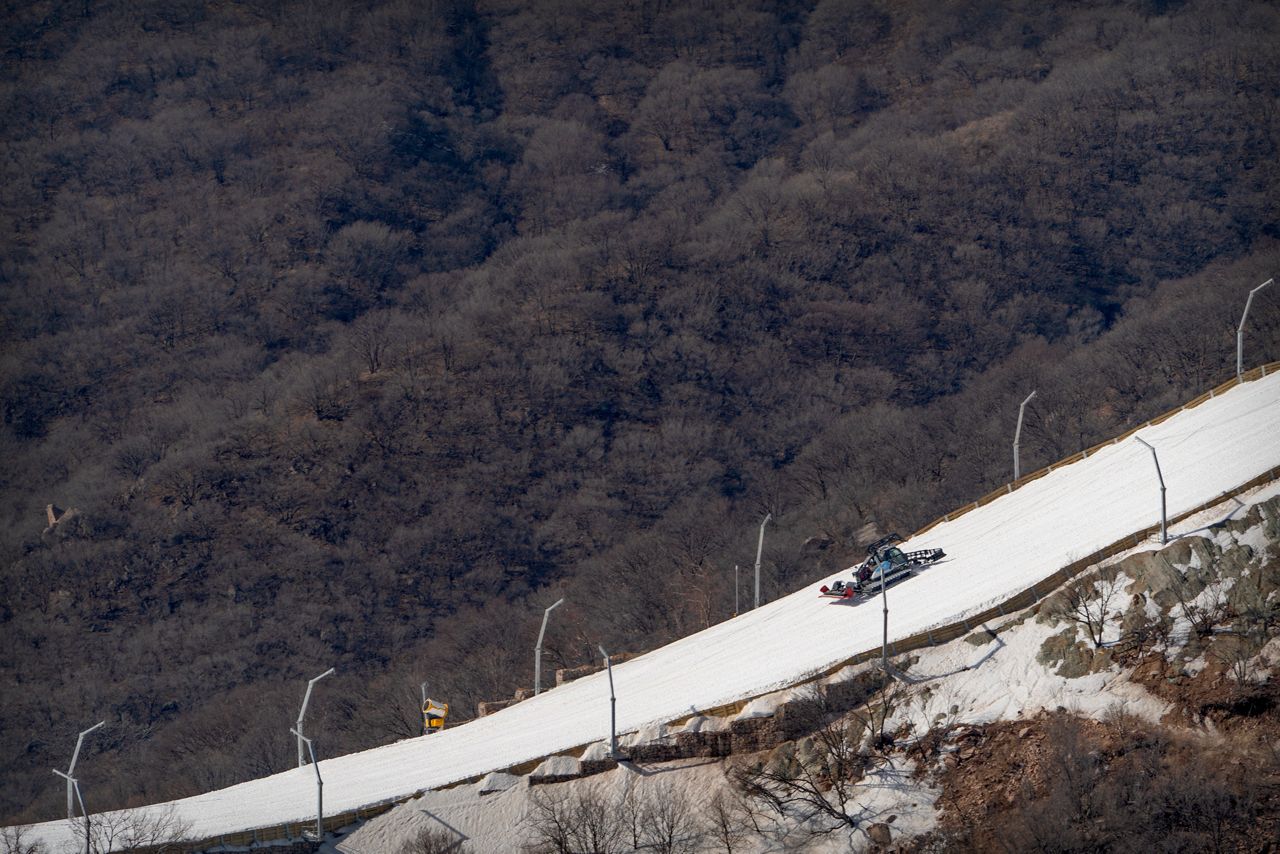Have you watched any coverage of the Winter Olympics in Beijing? Have you noticed snow only covers the ski, snowboard and Nordic runs and trails?
The mountains around Beijing are not suited for holding the Winter Olympics for one main reason. The climate in that area of China is dry during the winter months. In fact, during the winter, those mountains only get about 2.5 inches of precipitation.
(AP Photo/Mark Sheifelbein)
The Beijing area has hot, humid summers and cold dry winters. On average, Beijing gets 25 inches of rain per year. Almost all of that comes in the summer. Barely any comes in the winter.
The main source of rain water comes during the wet phase of the East Asia Monsoon. The dry phase is in winter.
December gets the least amount of liquid precipitation, just one tenth of an inch. January sees the fewest number of days with rain, only two days on average. So, leading up to the Olympics in early February, there is very little natural snow to work with.
February alone only gets two-tenths of an inch of liquid precipitation.
The coldest month in Beijing is January, with an average temperature of 26 degrees. February’s average temperature is 32 degrees. Up in the mountains, temperatures are much colder. The wind chill on one day during the first week was -13 degrees.
Just the right ingredients for making snow
Beijing has two things going for it when it comes to the Winter Games: cold temperatures and dry air. These are the two ingredients that are necessary to make good snow.
The mountains above Beijing are ideal for making snow, with temperatures below 28 degrees and an average dew point in February of just 7 degrees.

(AP Photo/Ng Han Guan)
The one thing that area does lack is water. A lot of water is necessary to make snow. Water had to be piped in to the snowmaking machines.
The Italian company in charge of making the artificial snow says it had to lay 40 miles of pipe to import the water to the ski slopes.
Roughly one million cubic meters of water had to be piped in just to get the games started. That is the equivalent of 400 Olympic-sized swimming pools.
Technicians began making snow back in November to be ready for the Olympics.
There are mixed feelings about the human-made snow. Some of the Alpine skiers like it because it is fast like ice. Actually, the Italian company responsible for making the snow has control over the texture of the snow.

(AP Photo/Ng Han Guan)
Some events require a specific quality of snow texture. With artificial snow, the machines can control the properties of the snow; the smaller the number, the lighter the snow.
Nordic events, such as cross-county skiing, need a number “3” snow. On the other hand, a heavier number “5” snow is needed for ski jumping.
Environmentalists are concerned the artificial snow contains a lot of chemicals. When the snow melts, the water will seep into the ground and the chemicals will go with it.
Wei Qinghua, the mountain operation manager at the Zhangjiakou and Guyangshu Olympic venues, said the water to make the snow “only comes from rain water and surface runoff,” in an interview with NPR.
Wei went on to say the melt off will be “recycled” for different purposes such as agricultural irrigation, tourism and landscaping.
Halfway through the games, the natural snow finally came
When it rains, it pours… or rather when snows, it blizzards. On Feb. 13, with just about one week left in the games, the alpine and nordic ski areas got dumped on.

(AP Photo/Luca Bruno)
It was snowing so hard that a few events had to be postponed because the heavy snow caused visibility issues. In some cases, the fresh natural snow had to be cleared off the cross-country trails with leaf blowers!
Not the first Olympics to use artificial snow
The Winter Games in Beijing is not the first Olympics to use artificial snow. The Winter Olympics in Vancouver, Sochi and Pyeongchang all had to use manufactured snow to some extent.
Mostly, these Olympics lacked cold weather, not dry weather. With climate change, manufactured snow looks to be more common than uncommon in the future.

